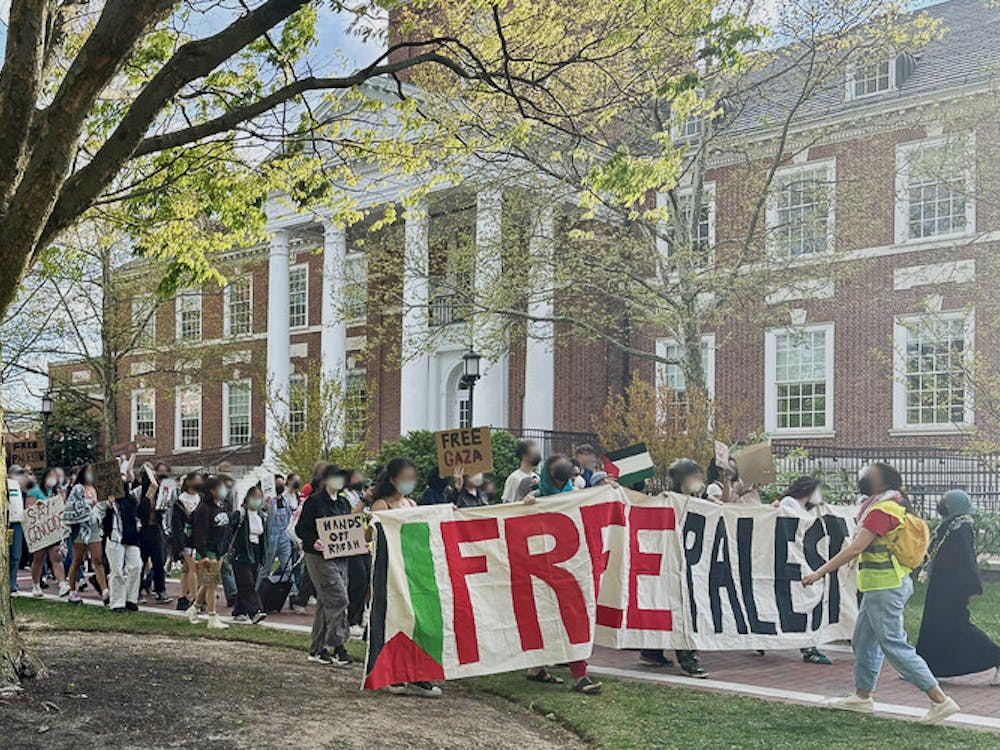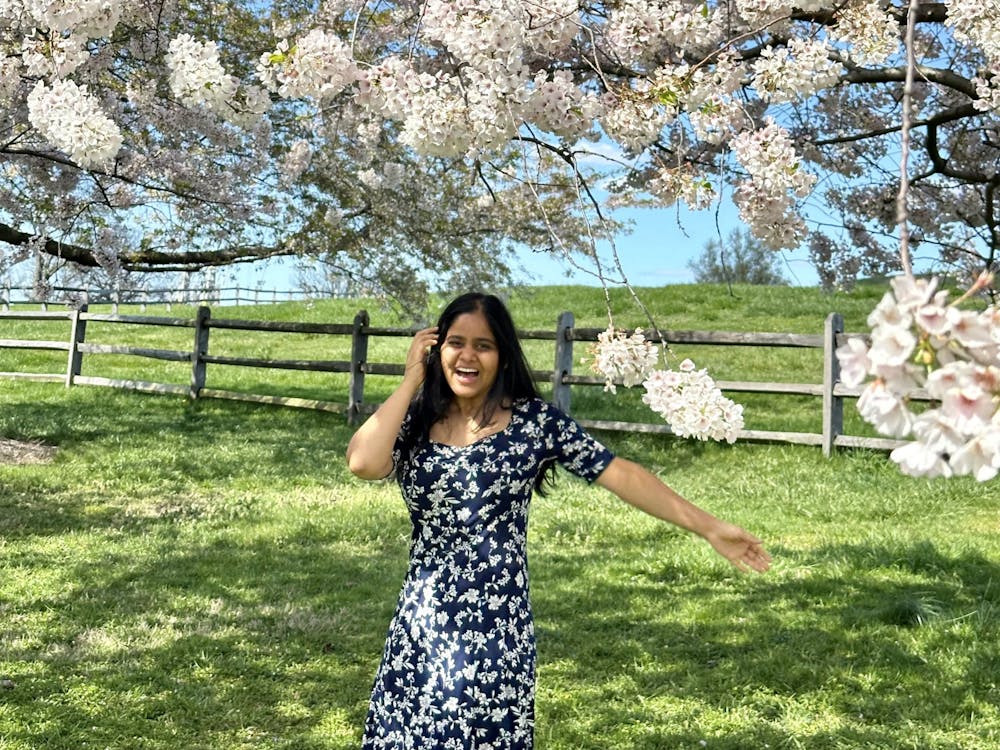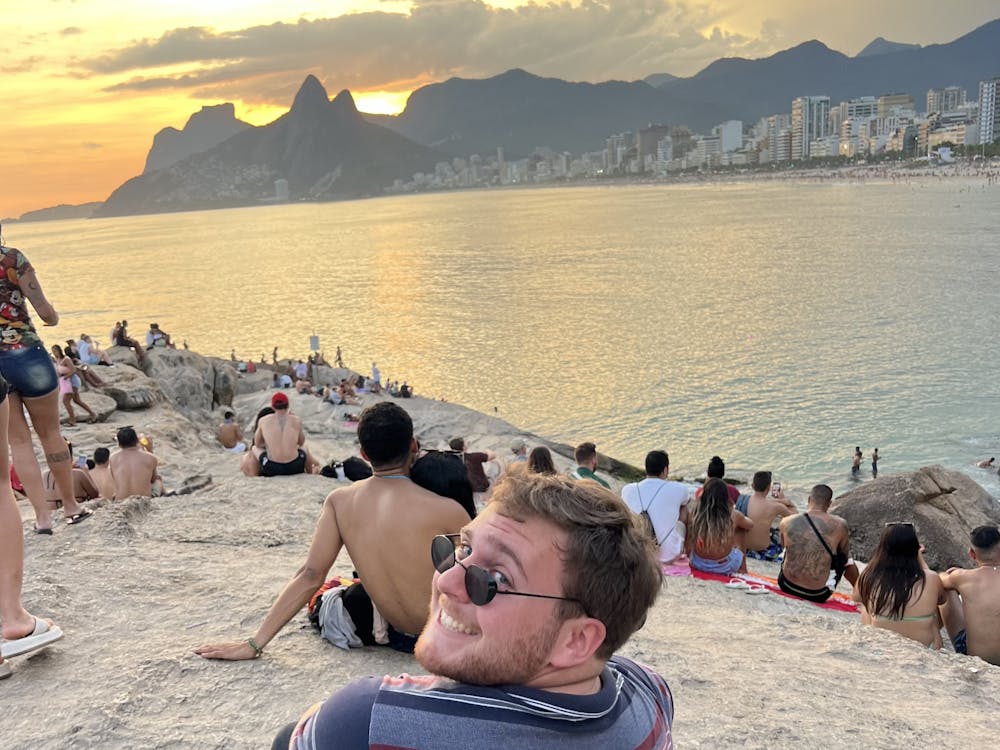As part of a 25 year tradition, the Baltimore Contemporary Print Fair took place at the Baltimore Museum of Art this past weekend. The two day festival, featuring 21 printmaking vendors from around the country, has returned after a three year gap due to renovations at the museum.
Those attending the fair had the opportunity to walk around the open space, speak to representatives at different booths and potentially purchase the paper works that captured their attention.
The prints on display at the fair showcased a wide variety of contemporary artists and printing techniques. The range in prices at this bi-annual fair also drew in newer art collectors, who are not yet able to splurge on more expensive pieces.
“We try, very purposefully, to get a range both in terms of variety of media but also price and artists,” Ann Shafer, the associate curator of prints, drawings and photographs at the BMA, said. “We try to get the blue-chip artists all the way down to emerging artists.”
The vendors and artists participating in the event are selected by Shafer and her colleague Benjamin Levy, who is the curatorial assistant for prints, drawings and photographs.
The duo research and follow artists during the interim year. They attend a variety of print fairs in New York each November and remain in contact with certain artists in order to watch the development of their printwork.
One popular artist that the Print Fair’s Durham Press booth featured this year was Polly Apfelbaum. According to Durham Press Director Gwyneth Fearnhead, Apfelbaum creates woodblock prints — called “rainbow rolls” — using wooden blocks dipped into blended inks.
The result is a vibrant horizontal rainbow pattern. The technique and colors created are particularly popular among crowds at fairs like this one.
Also displayed at the booth were larvae tracings and prints using mixed mediums such as thread and bubble wrap. In terms of selecting pieces to bring to the fair, Fearnhead tried to showcase the newer creations from the artists with whom she works.
Directors at Highpoint Center for Printmaking, located in Minneapolis, were also focused on bringing their latest prints to Baltimore.
“We are trying to show our most current work,” a Highpoint representative said. “We also like to show a mix of people in different stages of their career.”
It’s no coincidence that the newest creations were shown at the different booths since the two coordinators specifically seek out the most recent prints by artists.
“This is the last five years of printmaking. This is now,” Levy said.
Shafer also noted just how strongly the Print Fair attempts to showcase newly created printed materials.
“There’s a set of three Richard Sera prints at Gemini that I think are still wet,” Shafer said.
Another important element of the fair is its ability to expose the public to contemporary art in a way that is accessible and educational.
“One of the things we have done in recent years is to try to prioritize and showcase the people who are making the work,” Levy said. “The people behind the tables are the ones that worked with the artists on creating. For some of the booths they might be the artists themselves. From an educational standpoint, from an accessibility standpoint, they’re the ones who can speak very clearly about [the work] and answer any questions you have.”
Shafer echoes this significance of educational moments at the fair and the museum as a whole.
“We have a support group in the museum —0 the Print, Drawing and Photograph Society — and we work with them throughout the year on different programs,” Shafer said. “Part of the educational mission for us and the group is to help people understand printmaking because it’s complicated and technical and can be intimidating.”
In maintaining their focus on education, Shafer and Levy also note the importance of the print fair for young artists in the area. The two teach classes together for art and art history students, many of them from MICA.
Both Shafer and Levy see the fair as an opportunity for young artists and historians to see what is happening right now.
“In our interest of helping young artists grow, we’ve reached out these webs among young art groups around town and really encouraged them to come and check it out,” Shafer said. “So that’s a [more recent] shift for us.”
According to Shafer, the fair has also shifted and evolved in a number of other ways since it first began in 1990, especially in terms of the people attending the event.
“I think social media has changed our ability to reach people that we might not have been able to reach through our normal marketing streams,” she said.
The fair’s unique focus also requires individualized advertisement. Levy commented on the necessity of staying flexible in order to communicate the Contemporary Print Fair’s unique qualities.
“The fact that we are one of a very small number of print fairs that are only contemporary art. That in itself necessitates change,” Levy said.
















Please note All comments are eligible for publication in The News-Letter.